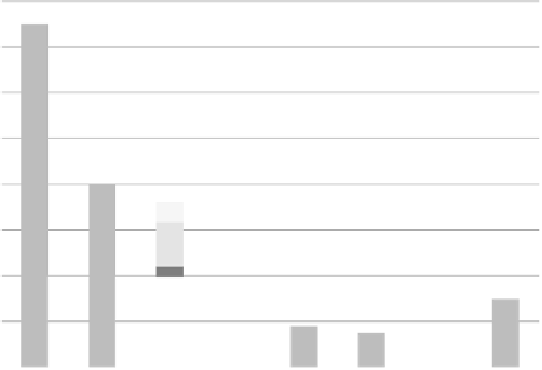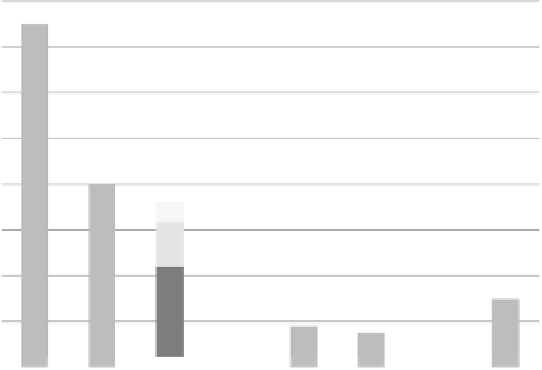Environmental Engineering Reference
In-Depth Information
used for generating energy, thus substituting fossil fuels. At the same time various
types of carbon storage and new raw material are provided by forests for indus-
trial purposes. After a highly variable period of time, wood products will release
carbon back to the atmosphere through emissions from production processes
and decay of wood-based products (Eggers
2002
). Research on this topic is still
novel and a substantial effort was given in the framework of Cost Action E31
“Management of Recovered Wood” to reduce the uncertainties in determining the
lifespan of wood material after harvesting.
Carbon is stocked in wood and paper products in use and in landfills. The
global pool of carbon stored in forests products is estimated to be growing
(Fig.
7.4
), from 2007, by 150 Mt C (540 Mt CO
2
equivalent) per year (Miner and
Perez-Garcia
2007
) reaching 5 Gt C (18.3 Gt CO
2
equivalent) in 2010. For this
reason wood and paper products may potentially play an important role in miti-
gating carbon emissions in the atmosphere. This topic was investigated in several
studies. Skog et al. (
2000
) used historical data and long-range projections in order
to track roundwood and carbon disposition through to end uses such as housing
and paper. Miner and Perez-Garcia (
2007
) examine the significance of emissions,
sequestration and avoided emissions of various wood products in order to assess
the carbon profile of the forest product industry.
Some studies assess carbon sequestration for a range of hypothetical conditions of
forest growth, harvest, end use, and discarding (Schlamadinger and Marland
1996
).
800
700
600
500
Other Industrial Roundwood
Pulpwood, Round & Split
Sawlogs and Venner Logs
400
Sawlogs and Venner Lgs
300
200
100
0
Fig. 7.4
Estimated C fluxes in global production of harvested wood products in 2003 (based on
FAO STAT 2005)
























